The Samsung 960 EVO (1TB) Review
by Billy Tallis on November 15, 2016 10:00 AM ESTAnandTech Storage Bench - The Destroyer
The Destroyer is an extremely long test replicating the access patterns of very IO-intensive desktop usage. A detailed breakdown can be found in this article. Like real-world usage and unlike our Iometer tests, the drives do get the occasional break that allows for some background garbage collection and flushing caches, but those idle times are limited to 25ms so that it doesn't take all week to run the test.
We quantify performance on this test by reporting the drive's average data throughput, a few data points about its latency, and the total energy used by the drive over the course of the test.
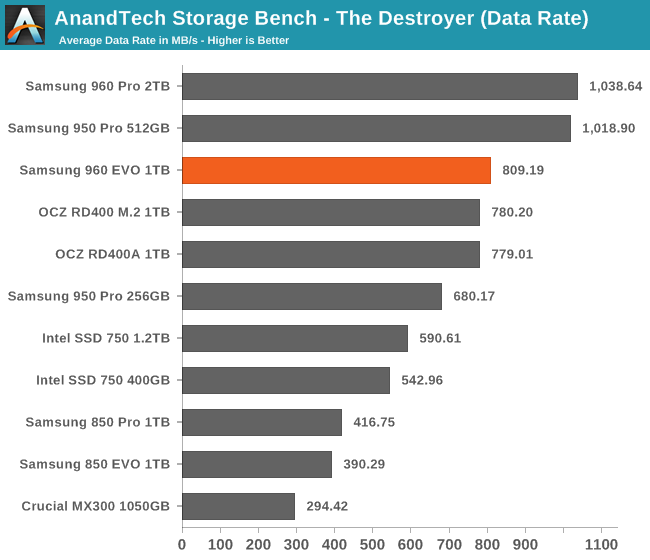
The 960 EVO is substantially slower than both the 950 Pro and 960 Pro, but the 960 EVO is faster than the flagship SSDs from Toshiba and Intel.
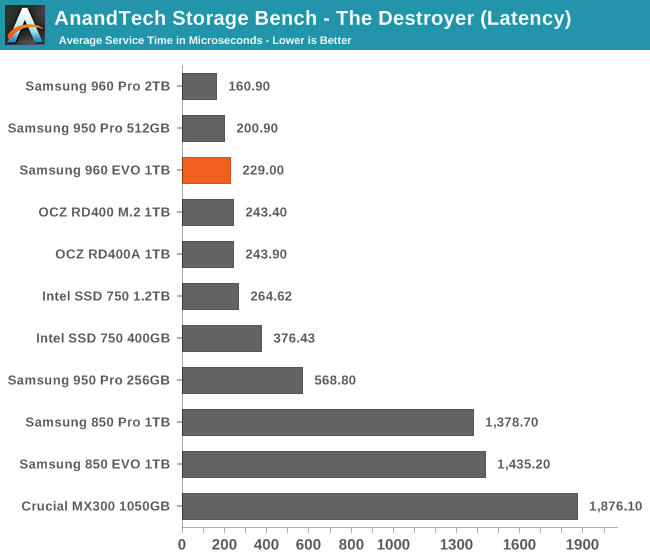
The 960 EVO delivers average service times on par with other high-end PCIe SSDs, and is still slightly faster than any non-Samsung drive.
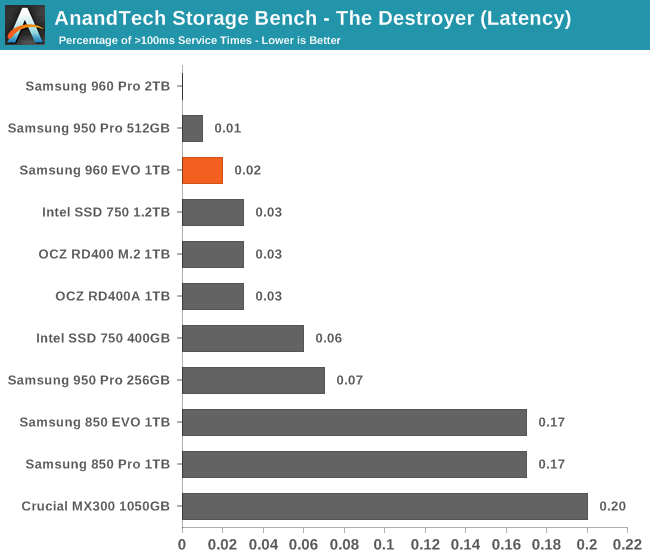
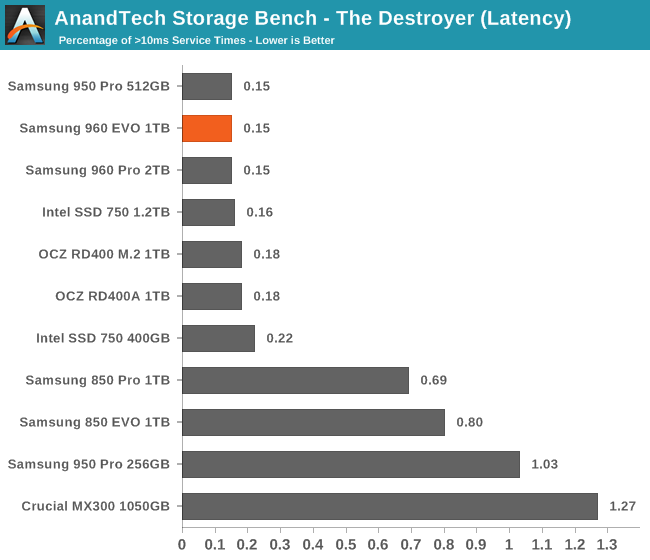
In the frequency of high-latency outliers, the 960 EVO is surpassed only by Samsung's 950 Pro and 960 Pro.
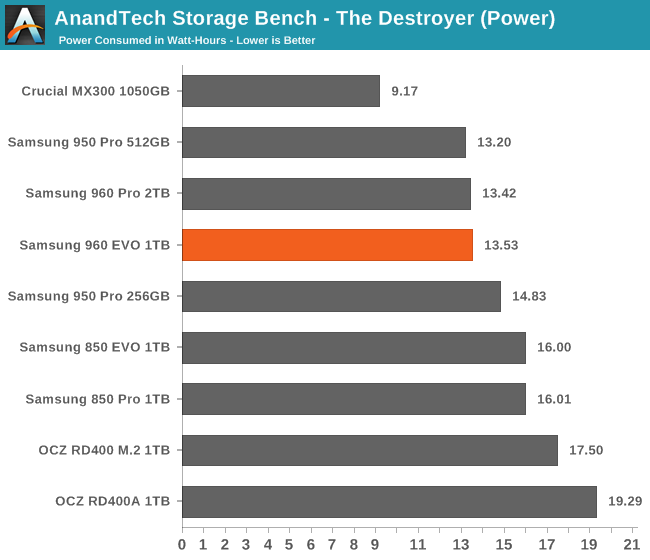
Despite using TLC NAND, the 960 EVO manages comparable power efficiency to the 960 Pro, putting it ahead of the fastest SATA drives but still drawing substantially more power than the most efficient SATA SSDs.










87 Comments
View All Comments
ddriver - Tuesday, November 15, 2016 - link
TOMs has tested it. As expected, it is marginally slower.Bensant - Tuesday, November 15, 2016 - link
Just received my 960 Pro today, installed and everything is working properly apart from the Samsung driver. Have spent the last 40mins trying to locate the NVME 2.0 driver to no avail. Would anyone have a link to it yet? Or is it still unavailable and coming with the new magician software at the end of the month?XabanakFanatik - Wednesday, November 16, 2016 - link
Yeah, you should be able to use the version 1.0 driver until they finally get around to releasing the new one with Magician 5.0.What capacity pro did you buy that you actually received this early? 512GB?
Bensant - Wednesday, November 16, 2016 - link
Idk that's a bit funny then, the original drivers (For the 950 pro) failed to detect my 960 pro for some reason. It's been installed and is booting as my OS drive too, just using the Microsoft driver!And yeah, was the 512GB that I ordered, couldn't exactly justify getting the higher capacities after just spending more then $4000 on a new triple monitor setup haha
jeffbui - Wednesday, November 16, 2016 - link
Benchmarks are great but where are the real world measurements? How will this affect me vs the other drives?jeffbui - Wednesday, November 16, 2016 - link
http://www.anandtech.com/show/2614Look at all the real world measurements: Game load times, application load times, multitasking performance,
Billy Tallis - Thursday, November 17, 2016 - link
Kristian did a good job of explaining why we rely on playing back traces of real-world I/O rather than re-running the applications themselves: http://www.anandtech.com/show/8979/samsung-sm951-5...It has only gotten more impractical to build a valid and reproducible application benchmark suite, to the point that any such system would have to be cut off from the Internet to prevent automatic updates from changing the conditions of the test.
From the perspective of the SSD, our ATSB trace-based tests present a nearly identical workload to running the applications themselves, but with far better reproducibility. It might be possible to improve how we present the results of those three tests, but I do not believe that splitting those traces into a dozen different scenarios would make it any easier to come to a purchasing decision than by considering the measurements we currently report.
RaistlinZ - Wednesday, November 16, 2016 - link
I'm currently using an 850 EVO on my ASUS X99 Pro motherboard. Will my mobo fully support the 960? Also, is it better to do a fresh Windows 10 install on an NVMe drive, or does cloning still work well?ghojezz - Wednesday, November 16, 2016 - link
I don't understand, anandtech's using Z97 Deluxe for benchmark but it only supports 10Gbps M.2 Bandwidth, right? So theoretically, you didn't push 960 to its max performance. Anyone care to explain?Billy Tallis - Thursday, November 17, 2016 - link
The motherboard's built-in M.2 slot is not used, because it does not permit measuring power consumption. M.2 PCIe drives are connected through an adapter and riser card to the primary PCIe 3.0 x16 slot, which will continue to be sufficient until PCIe 4 SSDs and motherboards arrive.